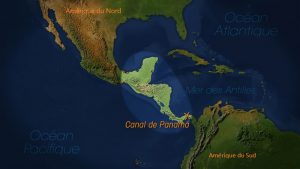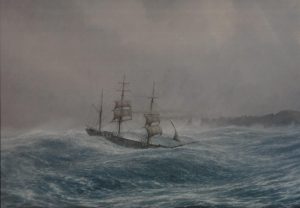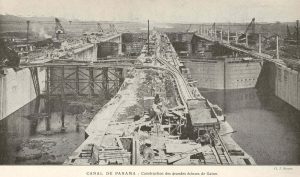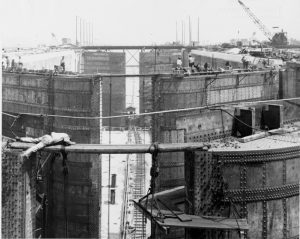For me, Panama and its canal lie at the core of a piece of maritime history, which I’m keen to tell you all about. It all began in 1502, when Christopher Columbus discovered the town of Colon, which still lies at the departure point for the canal today! However, he couldn’t have envisaged that a new ocean was hidden behind the isthmus…

Map of the Panama Canal (source, ARTE)
It was in 1513 that a man called Balboà was the first European to ‘see’ the Pacific! Indeed, after several days spent exploring the lush jungle of this Central American land, he discovered that beyond the Americas, there was indeed another ocean.
However, due to the maritime spice trade in the South American continent, the story behind the construction of the Panama Canal is linked to that of the archipelago of Tierra del Fuego. The latter, located at the southern extreme of the South American continent, is traversed by the Strait of Magellan. It was named after its first explorer, Fernand de Magellan, who discovered it in 1520.
At this time, this natural passage was the route most favoured by sailors wishing to sail from one ocean to the other. However, in 1600 things took a turn for the worse. With trade developing extensively, controlling the Strait of Magellan became an interesting prospect… At that point, the Dutch East India Company gained the monopoly of the Dutch merchant shipping and began to control the Strait of Magellan, requesting taxes from those passing through.

A painting by John Chancelor of the little English three-master River Boyne in 1875 with a solid fuel stove at Cape Horn
Loathe to pay up, the canny little Dutch sailors from the village of Hoorn, decided to make the rounding further to the south to avoid the tax. There they discovered the famous cape, which explains why the name doesn’t really have a Spanish ring to it… However, the route via Cape Horn was perilous and frightened the sailors, thus limiting the commercial exchanges.
Over 200 years later, in 1881, the French (oh yes indeed!) decided to find a way around this dangerous obstacle in the Deep South. And so it was that they decided to build an artificial passage in Central America: the Panama Canal. Shorter, safer and quicker, the idea of holding power in such a place was ingenious and would clearly be just as profitable.
However, the work being momentous and complicated, the French would abandon its construction and the job was taken on by the United States. It wasn’t until 1914 that the Panama Canal was finally opened. It was a Dantean taste, the build cost proving to be Pharaonic both in terms of currency and human lives since it was on the scale of the Egyptian pyramids…


Today, over 14,000 cargo ships negotiate the canal every year! On a personal level then, as I await this date with history, I’m making the most of the lush vegetation, the numerous seabirds and land-based birds and the odd porpoise, which come and track us down in the bay where we’re waiting our turn to slip through the canal.
Literary inspiration:
“Magellan” and “Les très riches heures de l’humanité” by Stefan Sweig
“Les voyages d’Amerigo Vespucci” by Jean-Paul Duviols
Source:
Wikipedia